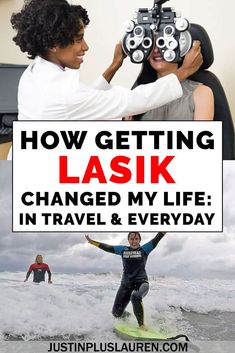LASIK (Laser-Assisted In Situ Keratomileusis) eye surgery has revolutionized the way millions of people achieve clear vision without the need for glasses or contact lenses. As one of the most popular and successful elective surgeries, LASIK offers a quick, relatively painless solution for correcting common vision problems like nearsightedness, farsightedness, and astigmatism. This article provides a comprehensive overview of LASIK eye surgery, including how it works, who it's for, and what patients can expect from the procedure and recovery.
What is LASIK Eye Surgery?
LASIK is a type of refractive surgery designed to correct vision by reshaping the cornea, the transparent front part of the eye. The procedure uses a laser to precisely remove microscopic amounts of tissue from the cornea, allowing light to be correctly focused onto the retina, resulting in clearer vision.
How Does LASIK Work?
-
Preparation
- The eye is numbed with anesthetic eye drops, and a special device is used to keep the eyelids open during the procedure.
- A small flap is created on the cornea's surface using a microkeratome blade or a femtosecond laser.
-
Reshaping the Cornea
- The surgeon lifts the flap to expose the underlying corneal tissue.
- A computer-controlled excimer laser is then used to remove precise amounts of corneal tissue, reshaping the cornea to correct the patient's specific vision problem.
-
Repositioning the Flap
- After the laser reshaping, the corneal flap is carefully repositioned over the treated area.
- The flap adheres naturally without the need for stitches, beginning the healing process.
Who is a Good Candidate for LASIK?
- Age and Eye Health: Candidates should typically be over 18 and have stable vision for at least a year. Good overall eye health, free from conditions like glaucoma or cataracts, is essential.
- Degree of Vision Impairment: LASIK is most effective for those with mild to moderate nearsightedness, farsightedness, or astigmatism.
- Corneal Thickness: Sufficient corneal thickness is necessary to ensure that enough tissue can be safely removed during the procedure.
Benefits of LASIK
- Quick Recovery: Most patients experience improved vision within 24 hours, with minimal discomfort.
- Long-Lasting Results: LASIK offers permanent vision correction, though natural aging processes, like presbyopia, may still affect vision later in life.
- Convenience: Many people enjoy the freedom from glasses or contact lenses, leading to a more active lifestyle and reduced ongoing costs.
Potential Risks and Considerations
- Dry Eyes: Temporary dry eyes are a common side effect, but this typically resolves within a few months.
- Glare and Halos: Some patients may experience glare, halos, or difficulty with night vision, particularly in the weeks following surgery.
- Over or Under Correction: While rare, some patients may require a follow-up procedure (enhancement) to achieve optimal results.
- Not Reversible: LASIK permanently changes the shape of the cornea, so it’s important to ensure it’s the right choice for your vision needs.
What to Expect During and After LASIK
- During the Procedure: The entire LASIK process usually takes about 10-15 minutes per eye. Most patients report only mild pressure and no pain.
- After the Procedure: Rest is recommended immediately after surgery. Most patients can return to normal activities within a day or two, though it's important to avoid strenuous activity and protect the eyes from potential injury.
- Follow-Up Care: Regular check-ups with the surgeon are crucial to monitor healing and ensure optimal results.












